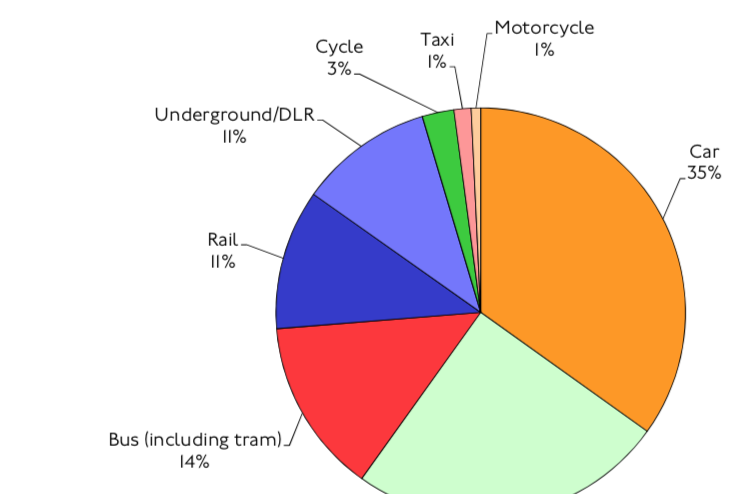Transport for London has recently published its latest report on Travel in London. At 279 pages, this latest in an annual series is almost certainly the most detailed account of travel behaviour in any city in the world. All credit to TfL.
Table 2.3 shows trip-based mode share. Private transport (very largely car) was responsible for 48% of trips in 2000, declining to 37% in 2015, but thereafter stabilising. Public transport has been stable at 35-36% of trips since 2012, and walking at 24-25% since 2000. Cycling grew from 1.2% in 2000 to reach 2.5% 2018. So the declining trend of car use has ceased in recent years, but it may resume as new rail capacity is opened, particularly Crossrail (the Elizabeth Line). Nevertheless, the target reduction of private transport to 20% by 2041, a feature of the Mayor’s Transport Strategy, looks difficult to achieve.
Section 9.7 discusses the role of licenced taxis and private hire vehicles (PHVs), a topic of much current interest. Taxis (black cabs) have been in slight decline while PHVs have grown substantially in recent years, largely reflecting the entry of Uber into the market. A survey of PHV users in London found that the two main trip purposes were for a night out and to/from airports, but only 28% of PHV trips were for both outward and return legs. App-based PHV users were attracted by specific features: estimate of fare, time for driver to arrive, knowing details of car booked, and estimate of journey time. 30% of PHV users said they had not needed to buy, replace or own a car, which facilitates a shift from individual car ownership.
Assessment
While a long-term target for reduction in car use has merit in that it shapes shorter term decisions, no Mayor is likely to hold office for anything like the time to reach the 2041 target date. A shorter-term target would allow performance to be held to account. And while the recent experience of London is that a steady reduction in the share of trips by car is compatible with the economic, cultural and social success of the city, sustaining this in the longer term would depend on substantial investment in the rail system that provides a fast and reliable alternative to buses, cars and taxis on congested roads. The biggest challenge for TfL and the Mayor is to find means of financing this investment.

